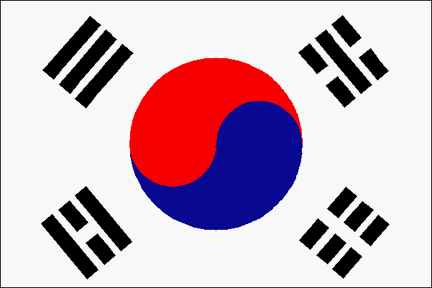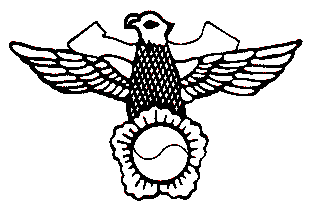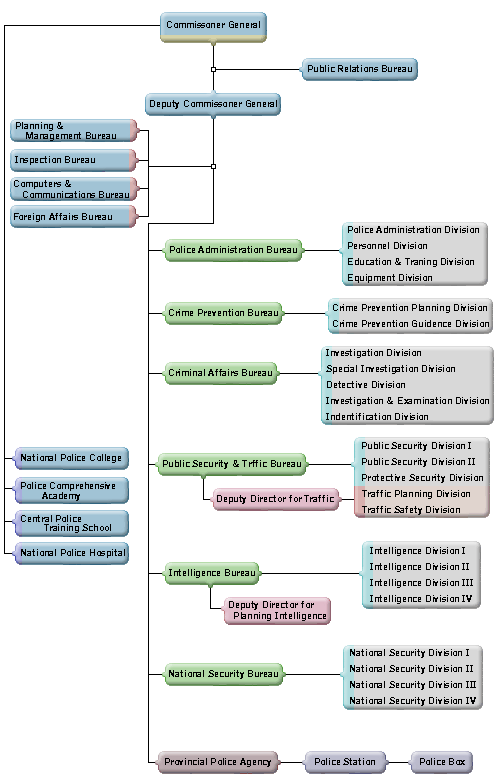





 The Korean National Police Agency system consists of, from
the top: one National Police Headquarters located
in Seoul; 5 special task police agencies,
including Marine Police; 13 provincial police
headquarters; 220 police stations; and 3,389
police branch offices across the country. The
Korean Police has its own chain of command
independent of the Army. There are no local
municipal police systems or state police
departments like those in many western nations.
During the Japanese Occupation Period. (1910 - 1945) Japan established the Police Administration Bureau (1910) under the Governnor-general in Choson. This had forced discontinuation of the Korean police system and caused the people's hatred and mistrust about the police. With the end of World War II, Korea restored its independence on August 15, 1945. However, Korea was suffering from disorder and chaos without any countermeasure or systematic organization to ensure public peace and order. On 17 August 1945 an autonomy organization was established by the Preparatory Committee for the Establishment of the Republic of Korea (Chairman: Yeo Woonyoung) This contributed to the public peace and order until the US Army was stationed in Korea on September 9. Various organizations formed, such as the Public Peace Corps., Student Organizations, Youth Organizations, Guards Corps., Self-Defence Organization, and Choson Student Group.
The Korean National Police Agency system consists of, from
the top: one National Police Headquarters located
in Seoul; 5 special task police agencies,
including Marine Police; 13 provincial police
headquarters; 220 police stations; and 3,389
police branch offices across the country. The
Korean Police has its own chain of command
independent of the Army. There are no local
municipal police systems or state police
departments like those in many western nations.
During the Japanese Occupation Period. (1910 - 1945) Japan established the Police Administration Bureau (1910) under the Governnor-general in Choson. This had forced discontinuation of the Korean police system and caused the people's hatred and mistrust about the police. With the end of World War II, Korea restored its independence on August 15, 1945. However, Korea was suffering from disorder and chaos without any countermeasure or systematic organization to ensure public peace and order. On 17 August 1945 an autonomy organization was established by the Preparatory Committee for the Establishment of the Republic of Korea (Chairman: Yeo Woonyoung) This contributed to the public peace and order until the US Army was stationed in Korea on September 9. Various organizations formed, such as the Public Peace Corps., Student Organizations, Youth Organizations, Guards Corps., Self-Defence Organization, and Choson Student Group.
The Police Administration Office was established under the U.S. Miliatary Government on October 21, 1945, with Police Administration Departments in each province. On 01 January 1946 the Police Administration Bureau was elevated to the Police Administration Department by Military Government Order No.23104 [Subject of Police Administration Bureau and Police Administration Department] . Subsequently the Provincial Police Departments were reorganized to District Police Bureaus (9 districts nationwide).
The new government that had declared the establishment of the Republic of Korea on August 15, 1948, took over administrative power from U.S. Military Government on September 13. However, the policy system did not remain as a department but was downgraded as an office within the Ministry of Home Affairs. The July 17, 1948 Law of Government Organizations Article 15 (Korean Law No. 1) stated that the Minister of Home Affairs shall govern the affairs on local administration, election, security, fire fighting, road, bridge, rivers, water service, construction and statistics and supervise the local organization for public peace and order to provide the basis of subordination to the Ministry of Home Affairs. On 03 September 1948 the Police Administration Department became subordinate to the Security Bureau in the Ministry of Home Affairs; local the police headquaters became subordinate to provincial Governors. As the National Assembly was dismissed by emergency martial law, on 17 October 1972 the government suddenly decided upon the so called "October Revitalization"style of Korean democracy. In 1974, the government started to study the police system to revive the proper functionality of the police. The Security Bureau was upgraded to the Security Headquarters and the Head of the Security Bureau was promoted to chief of Security Headquarter at the vice-minister level. The Security Bureau of the Ministry of Home Affairs was reorganized on 24 December 1974 into the Security Headquarters with three departments. The Personnel Education Department was established within the Department NO.1 and the Computer Center was established within Department NO.3. In the 1990s the Police searched for the political neutralization of the police. The efforts for this neutralization, such as the introduction of a bill based on the committee type that organized the national police committee belonging to the Prime Minister on March, 1989, and enlisted the police agency under the banner of the committee, has been continued. On May 31, 1991, the Police Law was established and promulgated. On July 31, 1991, the Police Committee of the Ministry of Home Affairs was inaugurated. The matter for the main policy about personnel management, budget, equipment, communications etc. and the development of police affairs, the matter for the management and improvement of police related to safeguard the human rights, the matter for the cooperation of affairs from the other national organization except police affairs, and the matter that is presented to a committee by recognition of the Ministry of Internal Affairs and NPA Commissoner General are deliberated and decided.On 01 August 1991 the NPA was inaugurated as an independent government organization which is not a subordinate organization of the Ministry of Home Affairs. It was reorganized to one Deputy Commissoner General, nine major staffs, and 41 sections, with reenforced management through the planning, readjustment and control. The NPA was reorganized into large departments and large sections by considering specialization and efficiency.
The police box is a first-line organization of the police and served as a base for anti-crime activities for maintaining the security of an area in consideration of the population, area, administrative district, frequency of crime. The total number of nationwide police boxes is 3,422, manned by 38,000 policeman; 43% of the entire police force work day and night in protecting the population from crime. The NPA performs various surveillance activities to guard against the appearance of anarchistic ideology struggle; reappearance of anti-democratic and anti-government violence. It also monitors increased labor circle meetings and demonstrations due to the IMF impact. Activities include watching various events such as ceremonial meetings, athletic events, and guarding the people visiting hometowns or parent's graves. The NPA utilizes its own order keeping guardians as well as guardians from security guard service company, allocating a minimum number of policemen when keeping order is required. It is also responsible for checking the protection status of important facilities and paying guidance visits to protect them from various dangerous activities. The chief of the facility takes primary responsibility for protection; the police takes responsibility for guidance and supervision. Protection of candidate activities include pre-investigate and present disrupting activities to the election speech sites, voting place and ballot counting locations.
